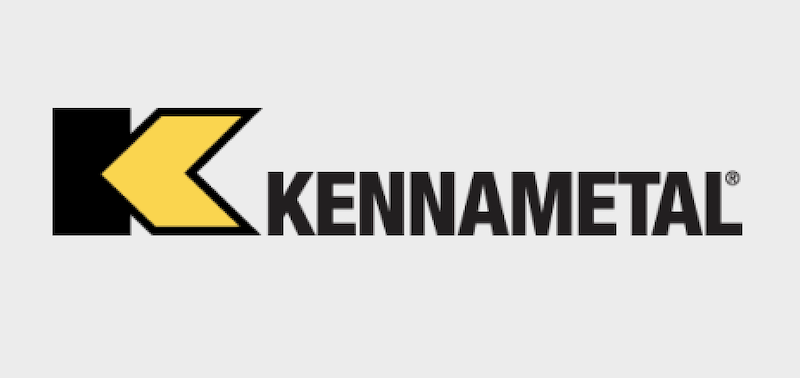MDM is providing this Premium content for free so that everyone can access important information about the ongoing impact of the coronavirus on distribution. For access to more content like this in 2021, sign up for MDM Premium.
To promote the best possible work environment while helping to slow the spread of COVID-19, experts recommend distributors:
- Prioritize regular and consistent staff communication using a system that employees are already familiar with.
- Know the bandwidth of your work-from-home staffers’ technology and adjust accordingly.
- To keep employees who can’t work from home safe, consider splitting them into teams and scheduling them to work at different times.
- Discourage the spread of the virus by periodically checking with your staff about their health and encouraging them to stay home if they are sick.
When the management team at Schilling Supply Co. first sat down to discuss its response to COVID-19 last month, having a contingency plan already in place helped to ease the stress, says President Chip Schilling. Thanks to lessons learned from the H1N1 flu in 2009, the Wisconsin-based distributor’s staff is cross trained and prepared to work in other departments. If there is a spike in absenteeism in customer service due to illness, employees from computer support, accounts receivable, telephone sales, clerical and sales will fill the gap — in that order. There are similar backup plans for management, delivery, warehouse and other departments companywide.
“Business is crazy busy,” Schilling says. “People are just trying to get through the day, taking care of customers and fulfilling orders, so it makes a difference when you have something solid to start with versus creating it during a really stressful time.”
But even with a proven response strategy, the rapidly evolving nature of COVID-19 has made it impossible for companies throughout distribution to plan for everything.
“There are some areas we’ve had to deal with on the fly,” Schilling Marketing Leader Amber Kaiser says. “Shifting as many staff members as we could to remote work required us to make a quick transition. We also made adjustments around our facility to support increased hand hygiene and social distancing, started hosting virtual meetings with our customers and staff, and have had to contend with unprecedented inventory shortages.
“The challenge with the mass shortages in items such as masks and hand sanitizer has been at levels beyond what we’ve previously seen. It’s been inspiring to learn how our manufacturers have gone the extra mile to increase production of these supplies in support of the health and safety of our communities,” she adds.
Crisis management often calls for extreme levels of creativity and flexibility, says workplace strategist Cali Williams Yost, who has helped many companies build flexibility into their workplace cultures. “The immediate goal in any crisis is servicing customers and getting the work done,” she says. “That means organizations must rapidly recalibrate how, when and where things get done. The virus is here right now, so limiting the amount of exposure to employees has become a priority because if it hits your workplace, it will create a bigger productivity problem.”
Given that certain functions of distribution make it difficult to comply with suggested federal and local safety measures, such as social distancing and working remotely, MDM asked Yost and supply chain management expert Ananth Iyer, Ph.D., a professor at Purdue University, what measures companies with similar workplaces are taking to manage the crisis. As one distributor put it, a lot of support people can work remotely but “you can’t ship product from your home.”
If Your Employees Can’t Work Remotely
With at least 43 states now enforcing stay-at-home orders and the White House advising all Americans to practice social distancing, more employers have transitioned their teams to remote work. One of the creative things that employers are doing to discourage the spread of the virus is dividing staff that cannot work from home into A and B Teams to work in shifts. “Some are alternating days, others have their teams work on different hourly schedules, with one group starting earlier during the day, and another group working later in the day,” Yost says.
If you’re operating with smaller teams, it’s more likely than not that production may go down. Leadership should be prepared for a drop in productivity, especially if multiple top performers fall ill, says Iyer, who advises distributors to be honest with customers about issues with staffing and productivity. Then, he says, try to negotiate with them for more flexible production metrics. “That’s important because distribution is a competitive business and despite all of the shocks to the system, you don’t want it held against you when it comes time for a contract renewal,” Iyer says.
Here are a few questions to consider during daily operations:
- How can you build more flexibility into the way your team works to promote social distancing?
- Are you regularly checking in with your employees about their health to minimize the risk?
- Do you have a daily cleaning routine to disinfect high-touch areas such as doorknobs? Coffee pots, drawer handles and refrigerators often have the highest concentration of germs, according to a researcher at the University of Arizona’s College of Public Health.
- What policies or procedures have you adopted to keep your employees safe? Crescent Electric Supply Company has had a risk management team in place for nearly two years. “Our team meets regularly and frequently so that we can be prepared for situations such as COVID-19,” Marketing and Communications Manager Marie Young says.
A few of the measures Crescent Electric has implemented to promote cleanliness and safety include providing branches with a cleaning checklist, as well as disinfectants and protective equipment for both employees and customers. “We’re encouraging those who are symptomatic to stay home,” Young says. “We have limited our in-person interactions with customers, vendors and each other by implementing travel restrictions and providing the resources necessary to conduct meetings virtually. We’ve also taken the precautionary step to cancel upcoming events hosted by Crescent. The situation is changing rapidly and we are prepared to make adjustments as needed.”
If Your Employees Can Work Remotely
A best practice for successful remote work during a crisis is to “stick with the technology you already have,” Yost says. “It worries me when I hear managers say they’re going to start using Slack to communicate with their people. This is not the time to start using new collaboration tools or platforms.”
Since its sales team used GoToMeeting prior to the pandemic, Schilling is now using it for group communications with remote staff. Upper management recently held its first in-house meeting using the videoconferencing technology to practice social distancing, and sales continues to use GoToMeeting for branch and cross-branch sales meetings, as well as for communications and trainings with vendor reps.
Although salespeople can use the platform with customers, most of that communication is being done by phone and email, Kaiser says.
“Right now, we have about half of our office, as well as outside and inside sales teams, working remotely to promote the safety and health of our employees and customers,” she says. “We will increase person-to-person communications pending the comfort level of employees and customers, and as state recommendations allow. Our priority is to keep everyone safe while still being able to deliver necessary supplies to support the needs of essential businesses who are working for our communities.”
Here are a few questions to consider when managing a remote staff:
- Are there any data security issues you need to address?
- How is the bandwidth in your employees’ homes? “Not every home in every location has a high bandwidth,” Iyer says. “Sometimes, a combination of sending documents via email and a phone is all you need to get the job done. If you send a document with multiple pages, don’t forget to number the pages.”
- Is your employee contact information updated and does every employee have this information?
- Are you taking advantage of the “white space?”
“The really creative managers are saying, ‘Clearly, there’s white space in my people’s schedule now …,’” says Yost. “Maybe you’ve got people working in the distribution center that can spend that time on back-burner projects that never get done. Maybe there are policies or process flows that you haven’t had a chance to review. Maybe there is new technology that you’ve been trying to investigate that could help you with distribution. This is a good time to do that background work. Take that white space and use it so that when you’re done with this crisis period, you will have set yourself up to be even more successful.”
Do You Have a Communications Protocol?
Employees are looking to their employers to ease concerns about their safety and employment and lessen the stress they are experiencing due to increased workloads and circumstances at home. Frequent communication about the why and the how behind decisions made can calm fears and help employees maintain a more positive mindset, offers Michael Bush, CEO of analytics firm A Great Place to Work. It also can provide the guidance and leadership that employees desire in times of uncertainty, adds Yost.
Maintain a communication protocol that tells employees how and when you’ll be communicating with them and your expectations for how they should communicate with you. “Make a list of the constituents that everyone will be communicating with during the day,” Yost says. “Track how often you’re communicating with your employees. Setting up that cadence is really important.”
The same is true for those who are still working in offices and distribution centers, Iyer says. “Something as simple as a big board in your warehouse that says, ‘Today we ship X out of Y,’” can be a great tool to increase the visibility of the distribution center’s performance. If you have fewer people, you will not be able to operate at 100%, but the fact that the 80% that you shipped all hit their metrics and were perfect orders is something good for everybody to understand for multiple reasons. It reminds people that the metrics did not change. It tells people that you truly appreciate the fact that they did 80%, and that any other ideas that you have to beat this are welcome.
“Distribution centers do a lot of work with a lot of coordination and an individual person may not fully understand how what they do impacts system performance. This is a quick way to give people feedback about how the system is doing.”
After the Crisis
Consider measuring whether or not some of the changes you made during this period of flexibility increased productivity, cut costs, or produced other positive outcomes. For example, maybe you can reduce business travel expenses by substituting a percentage of it with videoconferencing, Yost says. Were certain team members more productive working from home? Perhaps it would be cost-effective to move those positions out of the office.
“Once the crisis is over,” Yost says, “take what you’ve learned and then thoughtfully and deliberately develop what your workplace culture is going to look like until the next new normal.”
Related Posts
-
Ron Port, currently vice president and president of the Infrastructure segment, will become vice president…
-
Janine McManus, Sonepar USA SVP Human Resources, will be taking on the role of SVP…
-
The industrial distributors Director of Organizational Development Cory Calderon sees a post-pandemic future with a…



